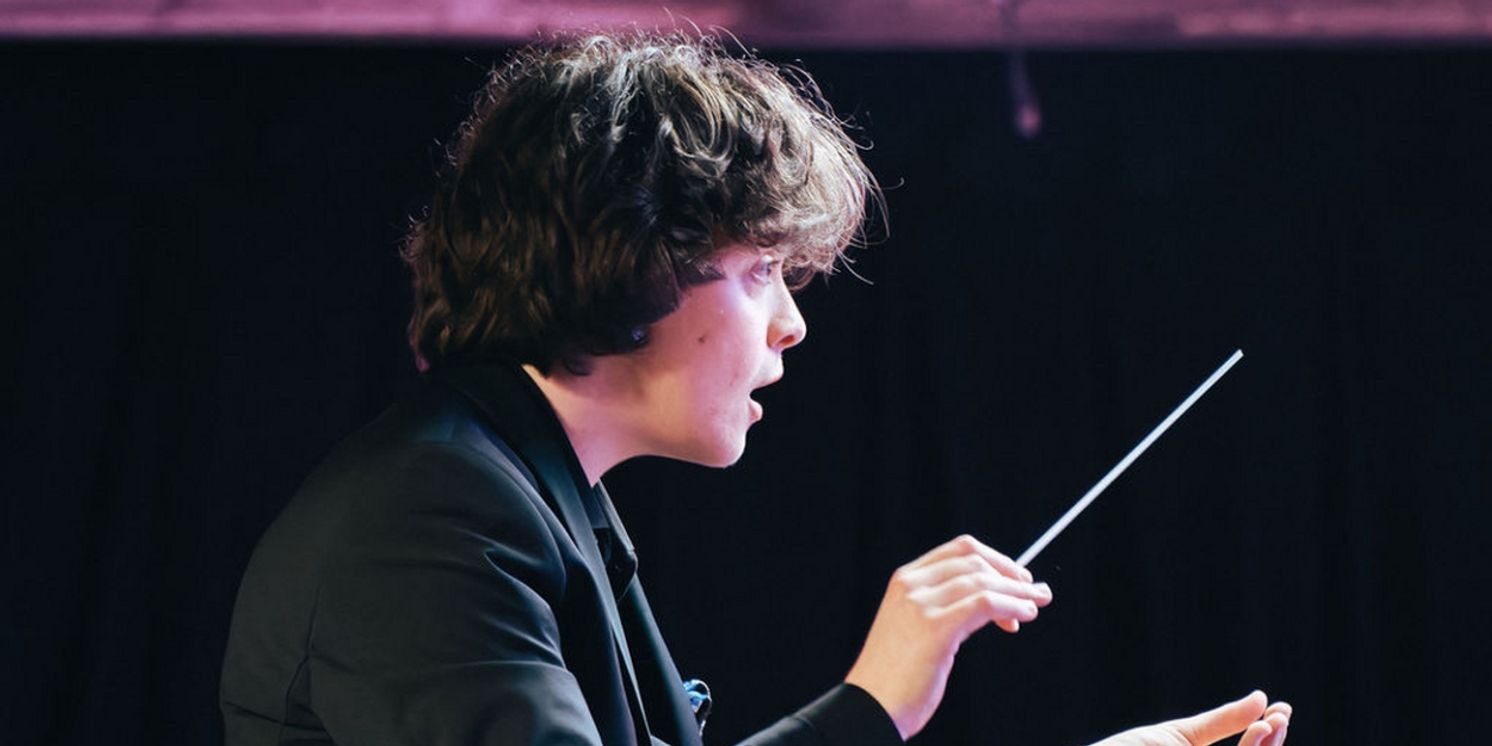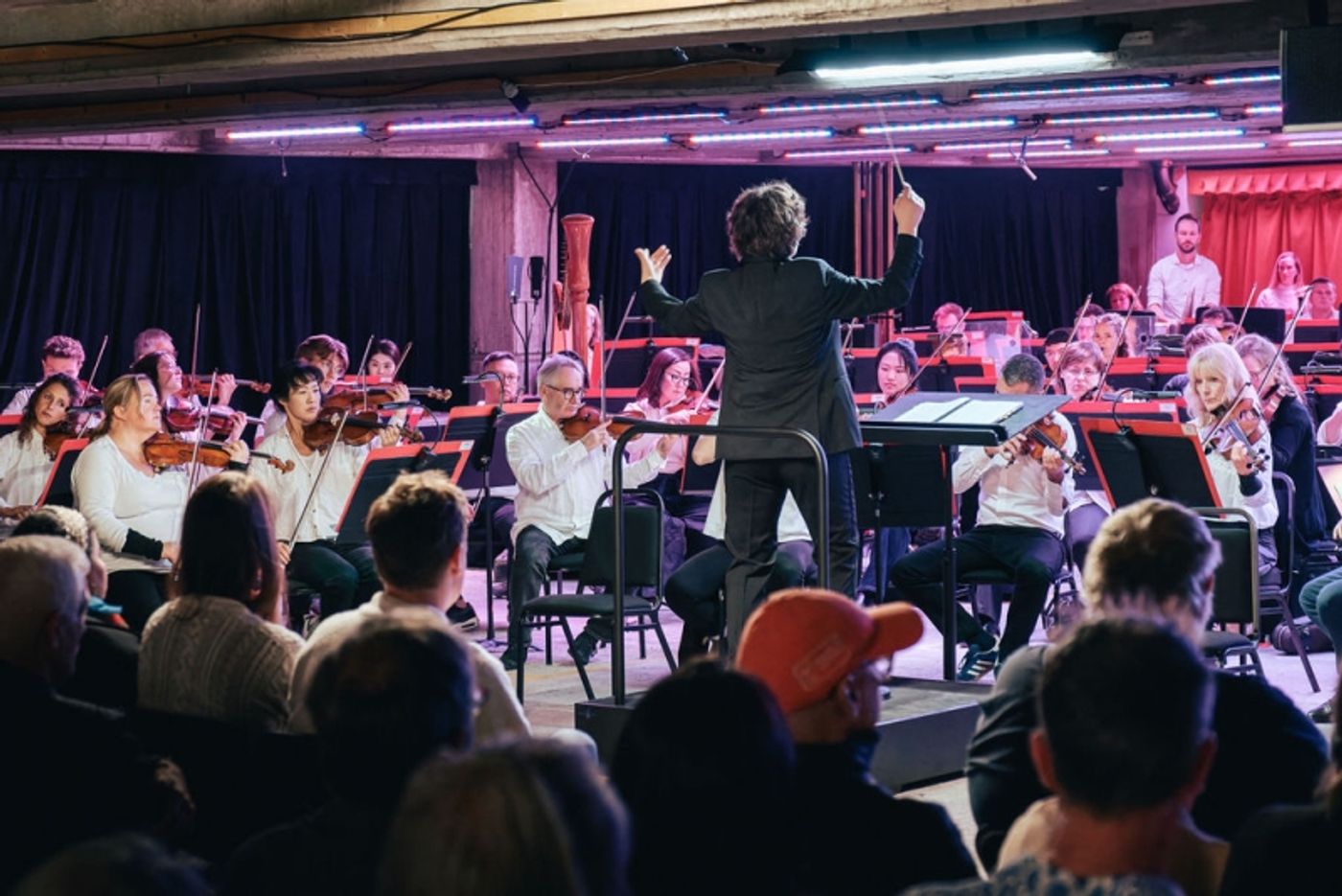Review: GUSTAV MAHLER'S SYMPHONY NO 2 'RESURRECTION', Bold Tendencies
Dealing with big emotions

![]() The Bold Tendencies Communion season came to an end last night, and it didn't go quietly. With 119 musicians of the Philharmonia Orchestra, 100 members of the Philharmonia Chorus and two soloists sopranos, conductor Nefeli Chadouli led the vast troupe in Gustav Mahler's Symphony No 2 'Resurrection’.
The Bold Tendencies Communion season came to an end last night, and it didn't go quietly. With 119 musicians of the Philharmonia Orchestra, 100 members of the Philharmonia Chorus and two soloists sopranos, conductor Nefeli Chadouli led the vast troupe in Gustav Mahler's Symphony No 2 'Resurrection’.
Before I go any further I'd like to recognise the feat in itself. Over 200 artists in any space is impressive, and probably more so in a former car park in Peckham. The logistics involved boggle the mind, yet the evening ran as smoothly as you'd expect in an opera house environment, and this isn't lost on me.
The audience was heaving, and there for one main reason - to be moved. Were we? I'd say more no than yes, but definitely somewhat at times.

Symphony No 2 ('Resurrection’) is dealing with big emotions; death, serenity, distortion, release and renewal. I could say I got none of the above in an obvious way from the score, or all of them in micro form if I focused really hard when listening to the related section.
The work is divided into five movements. The Allegro maestoso opens introducing the size and scale of the piece, the Andante moderato follows which is quite a long-winded, inoffensive waltz, and in the middle we find In ruhig fließender Bewegung. This section is meant to signify “a vision of life distorted and deformed” and it definitely gets somewhere towards the end.
Unfortunately the soloists entered the space during the final orchestrated “death shriek” moment, so it was difficult to fully engage with Mahler's agenda when necessary logistics were taking place…but that's showbiz.
The fourth - Urlicht, and fifth - Im Tempo des Scherzos movements are played without a pause, and also feature singers. This is where music and emotion started to come together for me, largely due to the mezzo soprano Natalie Lewis. This was Lewis’ Bold Tendencies debut and it was a strong one. Her voice has power and a clear timbre, but it was the emotional resonance that stuck with me, the pathos. Here I understood the “wish for release from life without meaning”, and most importantly Lewis didn't oversell the narrative intention, rather she embodied it.
Soprano Ella Taylor took a little longer to find their feet, but once there brought some powerful, emotive singing to the equation. Both soloists seemed to garner great strength and inspiration from the Chorus who were situated opposite them, and behind us, the audience.
Elsewhere we had brass and percussion sections in different locations, so at certain points the experience was definitely surround sound, but I'd argue that some of the placements gave the playing a slightly too muted feel. Atmospheric yes, clear, less so.
No one can deny Mahler's obvious skill, and he knew how to build in structural form, but here comes a very controversial statement: any of the good bits sounded like a poor man's Wagner; that's my take on this experience of Symphony No. 2 ‘Resurrection’. I've heard better fanfares and bedlam in musical form elsewhere. And nobody does life-questioning adagio like Wagner.
Bold Tendencies wouldn't be Bold Tendencies without a play on the conventional, so the evening opened with a recorded narration of Home by Warsan Shire. I believe the creatives involved hoped to contextualise Mahler's work through Shire's prose, but I'm afraid this didn't happen for me.
Shire's work stood alone, for its insight into what it means to be other. How one is perceived and the reality of the experience, in its origin and the numerous hostile environments that likely follow. Home only has six paragraphs divided into two parts, but it communicates a tangible existence most of us can't even contemplate. I hope Bold Tendencies have invited Shire to be part of the festival in the near future, as that would be an unmissable experience. Roll on 2025.
Gustav Mahler's Symphony No 2 'Resurrection’ was performed at Bold Tendencies on September 14.
Photo credit: Dan John Lloyd
Reader Reviews
Videos

